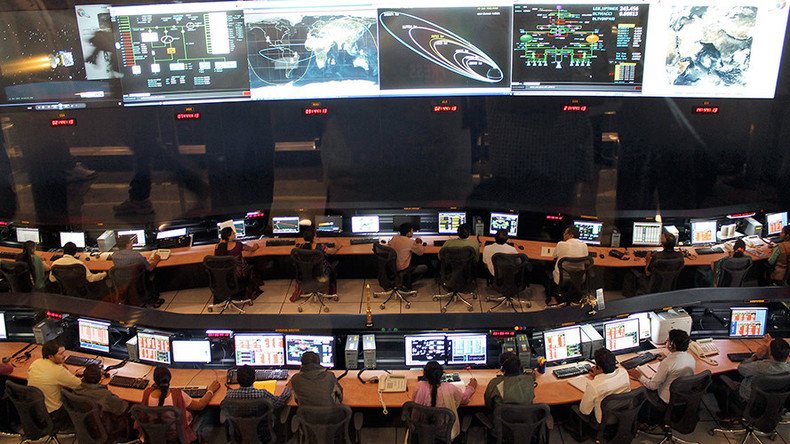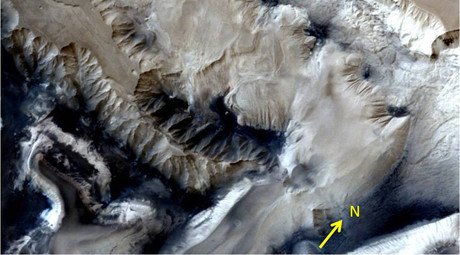Indian Mars probe celebrates 1,000 days in orbit

The Indian Mars Orbiter Mission, also known as Mangalyaan, has completed 1,000 earth days in orbit around the Red Planet, exceeding all expectations of the low-cost mission, which was originally designed to last only six months.
“MOM completes 1,000 Earth days in its orbit today (June 19, 2017), well beyond its designed mission life of six months. 1,000 Earth days corresponds to 973.24 Mars Sols (Martian Solar day) and MOM completed 388 orbits,” the Indian Space Research Organisation (ISRO) said in a statement.
The Mars Orbiter Mission, a $73 million project, blasted off from Earth on November 5, 2013, aboard an Indian Polar Satellite Launch Vehicle. After traveling to the Red Planet in 10 months, the satellite entered Mars’ orbit and began conducting a series of scientific experiments in September 2014 to study the planet’s surface and scan its atmosphere for any potential evidence of life.
While the unmanned probe was initially set to circle Mars about 500 kilometers (310 miles) from its surface for only six months, MOM still continues to collect data and send it back to Earth.
“The satellite is in good health and continues to work as expected. Scientific analysis of the data received from the Mars Orbiter spacecraft is in progress,” the ISRO said.
The Mars Color Camera in its extended lifetime has produced more than 715 images, the Indian Space Agency said, adding that data from the orbiter mission’s first year, released last September, is available for public use.
The Mangalyaan is equipped with five scientific tools including a color imaging camera, a thermal infrared spectrometer to measure the chemical composition of the surface, and instruments to assess the Mars atmosphere, including a methane detector.
The Indian project so far is the cheapest mission ever to be sent to Mars. At $73 million, the project is roughly one-tenth the cost of the $671 million that NASA paid for its Maven Mars orbiter mission.












